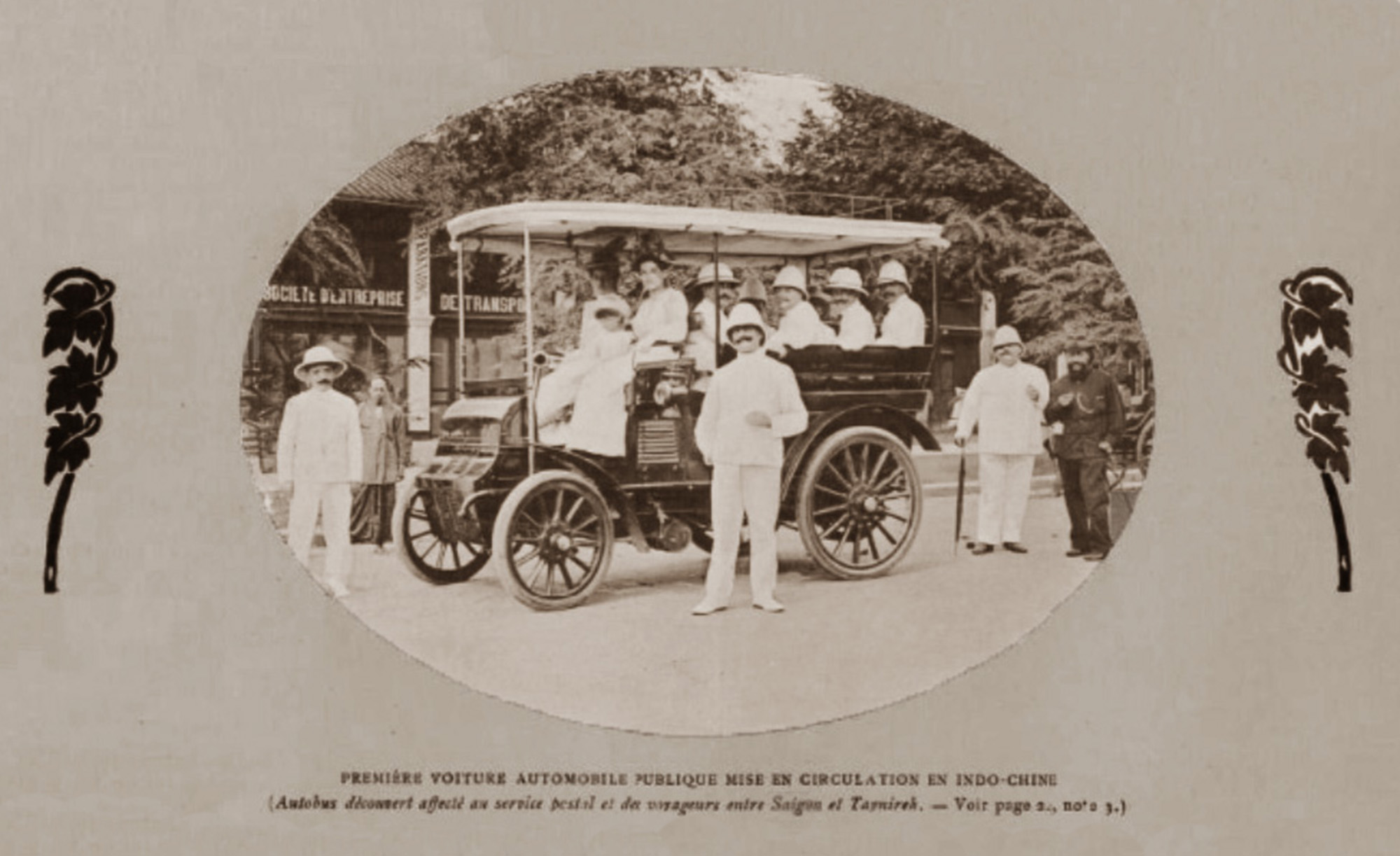
The first public motor vehicle put into circulation in Indochina (open bus used for postal and passenger services between Saigon and Tây Ninh)
Published in La Dépêche coloniale illustrée, 15 April 1907
We publish here a photograph depicting the first public motor vehicle in Indochina, which was put into circulation here in Saigon in 1901 by a motor transport company whose engineer and director was M. V. Ippolito. The latter, now the agent-général of Établissements Peugeot in Indochina, took over the management of the Services postaux et de transports de voyageurs, which now provides services between Saigon and several provinces.
The present government of Cochinchina has also provided certain administrators and officials with cars and even with motor boats. Some colonial critics have exercised their cheeky humour against a regime which, in order to encourage its provincial heads to maintain or develop the road network of roads, distributed motor vehicles to them. However, it’s certain that this has been to our great advantage in the development of the colony, not only because the ownership of motor vehicles has encouraged their users to ensure the construction and upkeep of good and long roads, but also because it has enabled provincial administrators to exercise personal supervision, control and direct influence over territories which hitherto could only be traversed once a year, and with great difficulty.
From the dual perspective of our prosperity and the security of the provinces, therefore, the administrative or private development of motoring throughout Indochina will surely have the happiest results.
Tim Doling is the author of the guidebooks Exploring Huế (2018), Exploring Saigon-Chợ Lớn – Vanishing heritage of Hồ Chí Minh City (2019) and Exploring Quảng Nam (2020), published by Nhà Xuất Bản Thế Giới, Hà Nội
A full index of all Tim’s blog articles since November 2013 is now available here.
Join the Facebook group pages Saigon-Chợ Lớn Then & Now and Huế Then & Now to see historic photographs juxtaposed with new ones taken in the same locations, and Đài Quan sát Di sản Sài Gòn – Saigon Heritage Observatory for up-to-date information on conservation issues in Saigon and Chợ Lớn.

